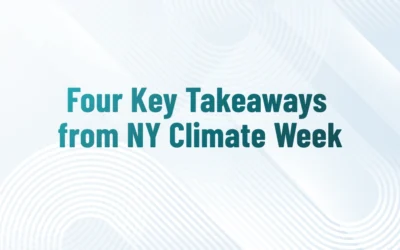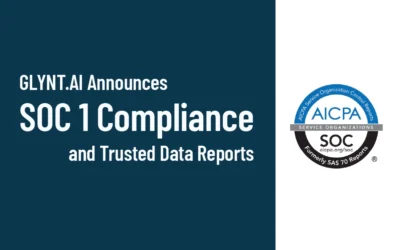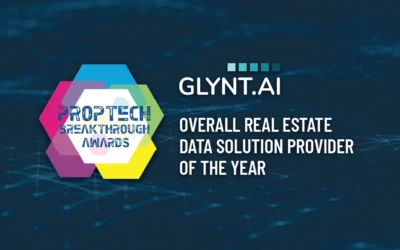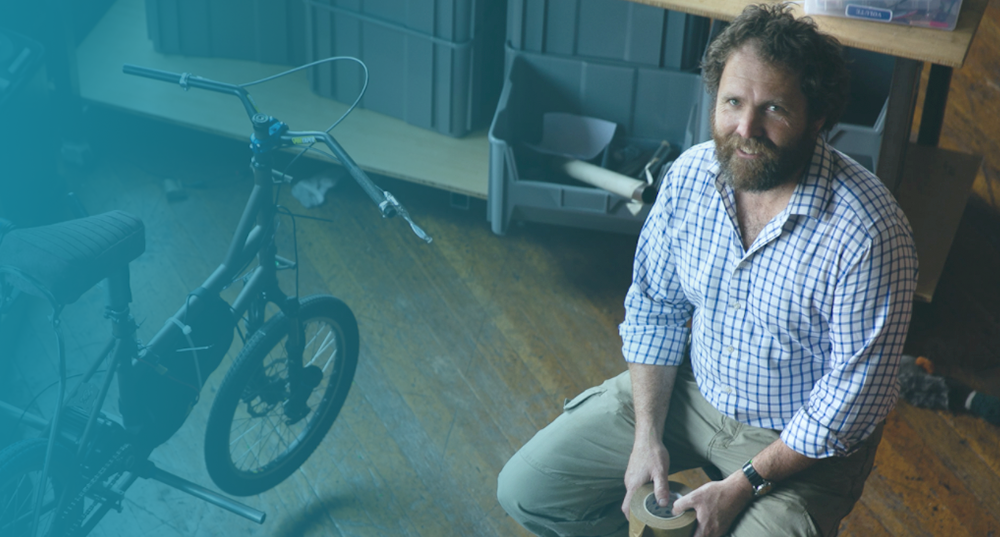
Saul Griffith
The Audacious Idea has a logical flow and spans data, technology, business models, finance and government policy. To keep it organized in my head, I developed a shorter version that provides a quick tour. Here it is:
Build the Map. Saul built a detailed energy map of the U.S economy. Energy in – from coal, nuclear, hydro and so on – and services out – heating, cooling, running factories and so on. See a map, known as a Sankey flow, here.
Identify the Waste. Then Saul observed that the single biggest output was “energy waste.” (See this at the bottom of the energy map.) Waste arises from the physics of transforming coal into electricity, gasoline into forward motion, natural gas into steam, and so on. Put a 100 units of energy in, and only 60 come out in the form of useful energy. The rest is waste. Seems incredibly inefficient, but energy waste has been present and at the same scale since the 1970s.
Downsize the Solution. Saul observed that if we want to solve the climate change challenge, the cheapest solution is to avoid waste in the first place. Let’s modernize with energy sources that don’t produce waste. This one insight saves 40 cents out of every dollar spent on climate change solutions. Suddenly, every other plan is too expensive.
Scale Solar…. Locally. Per Saul’s detailed analysis, solar is the cheapest zero-carbon technology to scale. But… while we have lots of open space in the American west, our demand is not located there. And the physics of long transmission lines dictate electricity losses every transmission mile. So we must scale solar where it is needed, locally. At our homes, at our stores, and in our community.
The Time Scale Drives the Business Scale. To achieve a zero-carbon future by 2035, the analysis shows we need a solar industry that is about 100 times larger than we had in 2019. This is a manufacturing challenge, an install challenge and a business model challenge. Each challenge is solvable today; we have the tools we need, We’ve learned a lot during the past 15 years in the cleantech industry.
Rethink the Home. Remember that 40% waste? Well take a look at your fridge, your water heater, your furnace. Each is part of that number. So let’s invent household products that provide the services we need without waste. We need hot water, cold food and indoor air comfort. That’s a new set of appliances. Saul and others have inventions for this already. Then let’s figure out how to manufacture, install and scale to transform every home in America.
Rethink our Parking Lots. One of the most valuable assets is a plot of land, near a key junction in the electrical grid, serving local demand, that is available for solar development. We have a shortage of these sites in our communities.. So let’s open up our commercial parking lots to solar. Park under the solar canopy at Walmart or Target. Park under the curbside canopy in shopping areas. There’s a trend in new home construction to build modular components at the factory and install in days on site. Why not the same for solar carports?
Put Cash in Our Pockets. At scale, changing our home appliances and adding solar locally is cheaper for the American family than the status quo, eg continuing to use older technologies and buying electricity or natural gas from utilities. Suddenly the conversation changes. “How will we pay for it?” becomes “How can my company get a part of this?” We’ve proven that money can be made in cleantech. Let’s set up the scale to make 100X more while delivering financial savings to consumers.
Use the Greatest Financial System in the World. Everything described so far is about Main Street. Local installation jobs, manufacturing jobs, new businesses in our communities. Let’s put the wind at their back with financing for products and businesses from Wall Street. The US financial system invented a low-cost 30-year mortgage; no other country has such a large and stable financing product. The 30-year mortgage has literally changed lives because its financial stability enables shelter… Let’s bring the same quality of financial innovation to climate change.
Jobs, Clean Air, Clean Energy and Cash in Every County in the USA. We’re tying up the vision with a bow: We will be employed, healthier and richer. The numbers pencil out, the conversation is flipped, the private sector is empowered. This is the Audacious Idea.
During these crazy and darker days of Covid-19, it brings me great pleasure to bring the Audacious Idea and agenda forward. We’ll be working with Saul and his team, and other companies. Our first activity is developing Blueprints for Energy Innovators, as part of a grant from the state of California. Join us!

